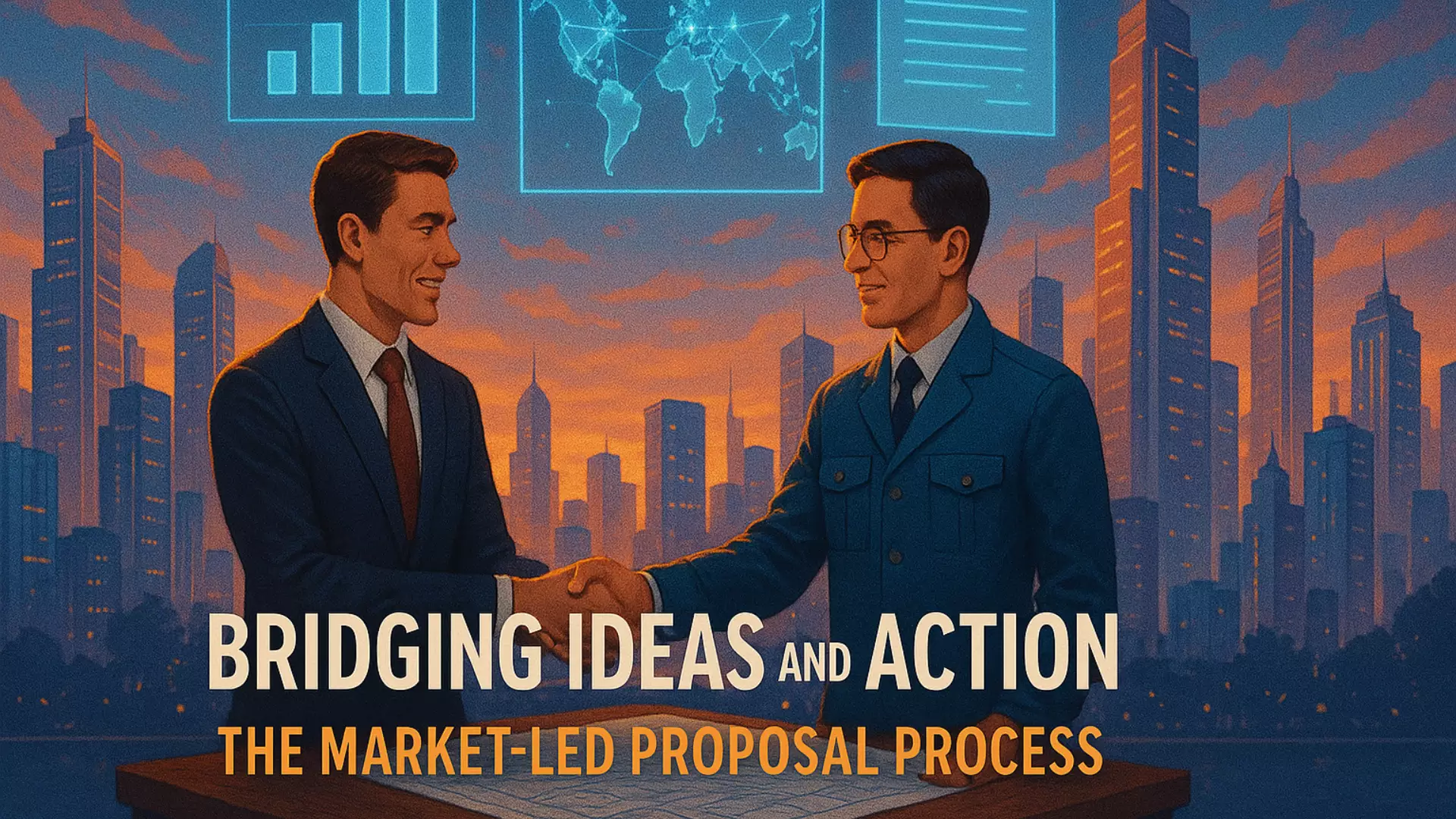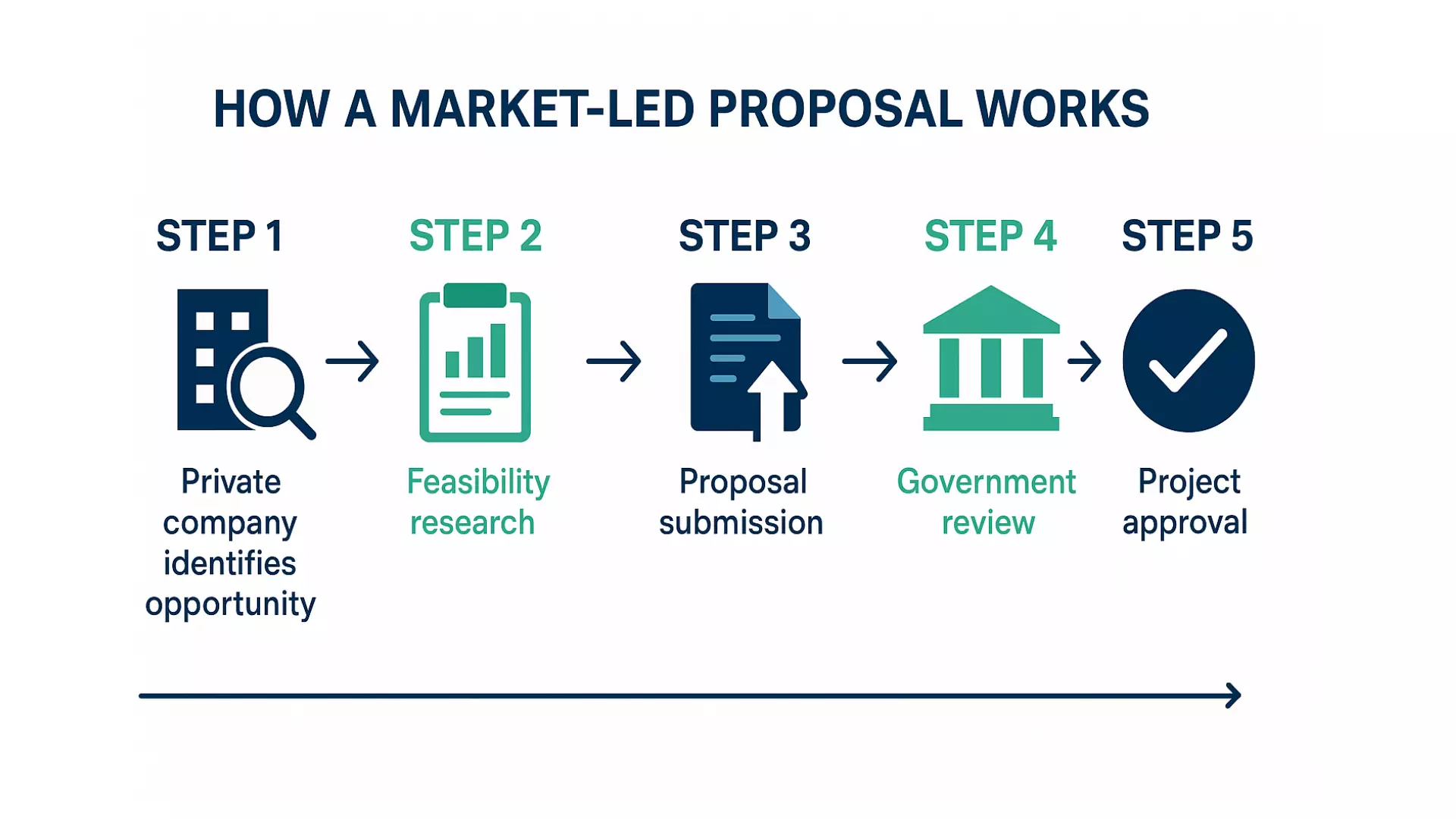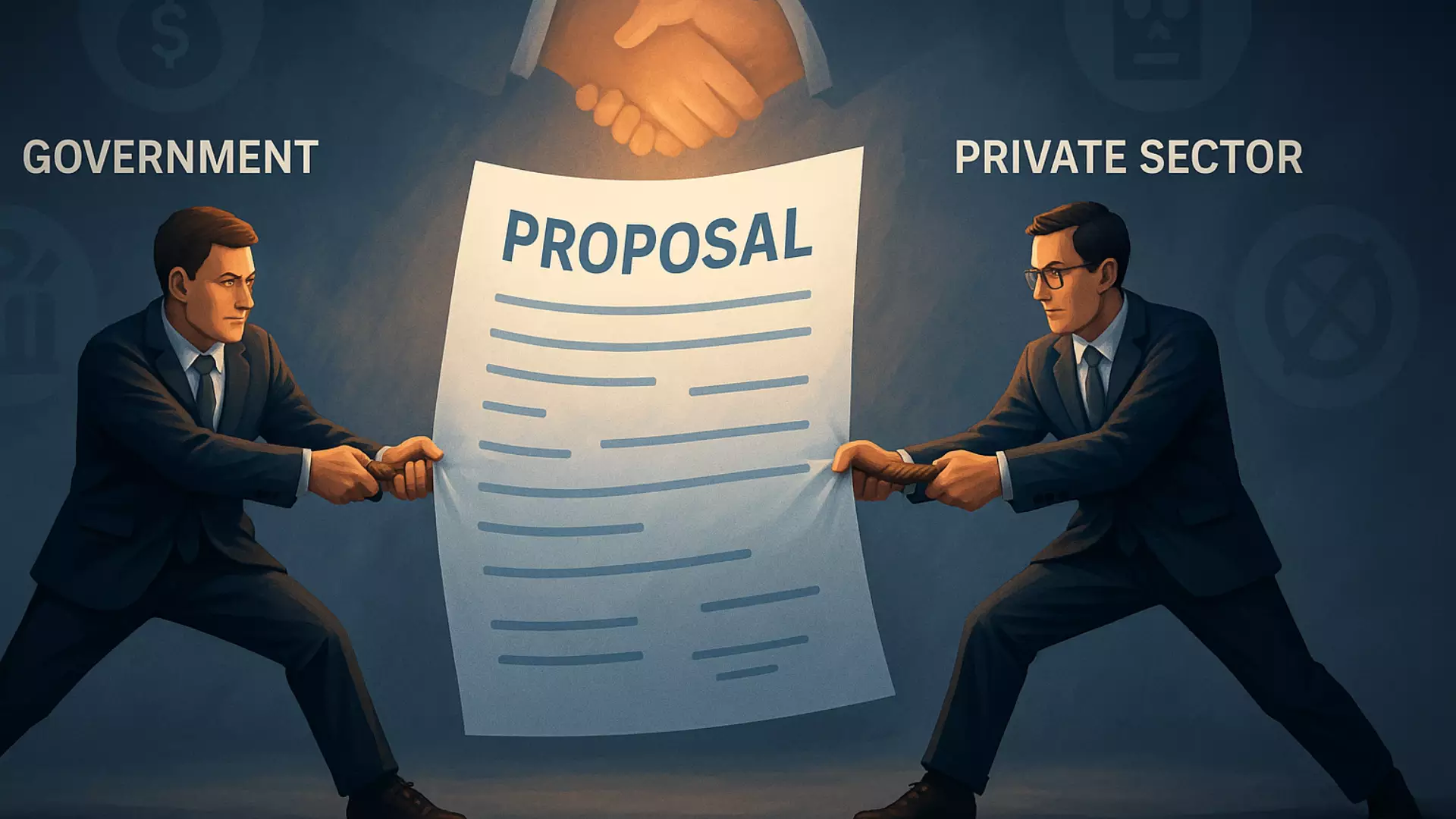Market Led Proposals – Definitions, Examples & Framework!

With a public-benefit and cost-saving idea which can be launched in a span of short time, you’re waiting for weeks, months, and sometimes even years for the government to see the gap. Private sector companies have become super innovative and fast-paced over the span of the last few decades. Meanwhile, governments all around the globe are really slow when it comes to initiating projects such as launching a public transport system, a solar energy project, etc. So, when the companies don’t see any announcements for the tenders, they keep the pure gold ideas to themselves, which is a big loss for everyone in the game, the government, the company, and the country.
Through market led proposals, also known as unsolicited proposals, private businesses can pitch their ideas to the government and propose a business deal. If you have an idea, you’ve done your homework, and are ready to work on it, you can simply present your idea to the government rather than waiting for any tenders (which they’re never gonna announce). So, don’t let your smart, scalable, and high-impact ideas sit in the back because of red tape-heavy government.
Reading this blog post is your chance to explore the full potential of your ideas through leveraging the market led proposals. This guide will cover the basics of market-led proposals, how they work, what makes them successful, and the common challenges you might face.
Market Led Proposals: Definition & Why They Matter
To understand the clear difference between traditional procurement and market-led proposals, let’s take a look at the definition of both terms. Market Led Proposals (MLPs) refer to innovative unsolicited ideas by privately owned businesses to the government, presenting a potential partnership opportunity.
Contrarily, traditional procurement is a method in which the client has an upper hand over the worker or the business because it announces a tender (inviting companies to bid their proposals) for the project/idea. Now, market-led proposals are getting traction globally because businesses get the freedom to work on their terms and values.
By now, proving the importance of these proposals isn’t required, but here are 5 solid and transformative reasons you didn’t think of that show why the market led proposals matter more than ever.
A Step-by-Step Overview: How It Works
The birth of market led proposals is dependent on private businesses identifying the public needs and filling the gaps through their innovative and public-benefit solutions. We have broken down the “so far best and easiest” step-by-step overview regarding how it all works.

Step 1: Opportunity Identification
Almost every market led proposal begins with a problem or gap that the government does not address. A private business, NGO, or investor identifies this need and comes up with a practical, innovative solution. For example, a tech startup might notice that there’s a lack of high-speed internet and design a cost-effective solution instead of waiting for the government to announce an expansion plan.
Step 2: Feasibility Research & Proposal Drafting
An idea doesn’t work alone; it should be backed up by solid evidence, which means that the company should research the technical, financial, and operational aspects of the idea. It involves gathering data, conducting the proper market analysis, and preparing a detailed proposal that is valuable to the public, government and becomes the foundation of discussion with the government.
Step 3: Government Engagement
Once the proposal is ready, the private entity submits that to the relevant government department. This stage often involves initial meetings, Q&A sessions, and preliminary evaluations to see if the idea will align with the national goals or not.
Step 4: Evaluation & Negotiation
In this step, government officials assess the proposal’s feasibility, public value, and the cost-benefit ratio. This step may include independent assessments or expert reviews, too. If the proposal is promising, then both parties negotiate project terms, responsibilities, and funding arrangements.
Step 5: Final Approval & Implementation
After reading the agreement, the project will be formally approved. Contracts will be signed, funding will be allocated, and implementation will begin. Timelines can range from a few months to several years, because it depends on the nature of the project.
Actions
Outcomes
Identify opportunity
Spot a public service gap
Conduct feasibility research
Develop a strong, data-backed proposal
Engage with government
Submit a proposal and discuss possibilities
Evaluation & negotiation
Agree on terms and assess value
Approval & implementation
Execute the project and deliver benefits
Key Components of Successful Market Led Proposals
Apart from understanding the MLPs process, People Also Search For its key components. Every idea will not pass through the government review. In this regard, strong Market Led Proposals share some specific characteristics that make your idea hard to reject. If you want your proposal to stand out, make sure it includes the following core elements:
Government Perspective: Risks & Rewards of MLPs vs. Private Sector Perspective
Market Led proposals offer advantages and disadvantages for both parties. Understanding why companies initiate them and these perspectives helps you to bridge the trust gap and improve collaboration.
Government POV
Private Sector POV
Rewards: MLPs allow the government to explore cutting-edge solutions because they may not have the resources or expertise to develop themselves.
Rewards: Its main benefit is the ability to pitch ideas without waiting for the government to announce tenders. This opens doors for creative projects that might otherwise never be considered.
Risks: If the project fails,/ it may face bias concerns or political backlash, as governments maintain strict transparency and evaluation processes to uphold public trust.
Risks: You may face high preparation costs without guaranteed approval, and the possibility of idea rejection or adaptation without credit.
Challenges and Criticisms (And How to Overcome Them)
Like any other partnership between public and private sectors, MLPs also face criticism. Here are the main concerts and ways to address them:

How to Write Market Led Proposals: Best Practices
If you are ready to submit an MLP, these strategies can help you create a strong and well-structured proposal. Let’s take a look!
A simple, clear, concise, and benefit-driven proposal stands a much better chance of moving forward.
The Bottom Line
Market Led proposals bridge the gap between public needs and private innovation. They give companies a direct path to bring high-impact ideas to life without waiting for lengthy tender processes. They also give governments access to creative solutions they might never have developed internally.
When a proposal is well-structured, backed by solid research, and aligned with public interest, an MLP can deliver a win-win outcome for businesses, governments, and communities alike.
